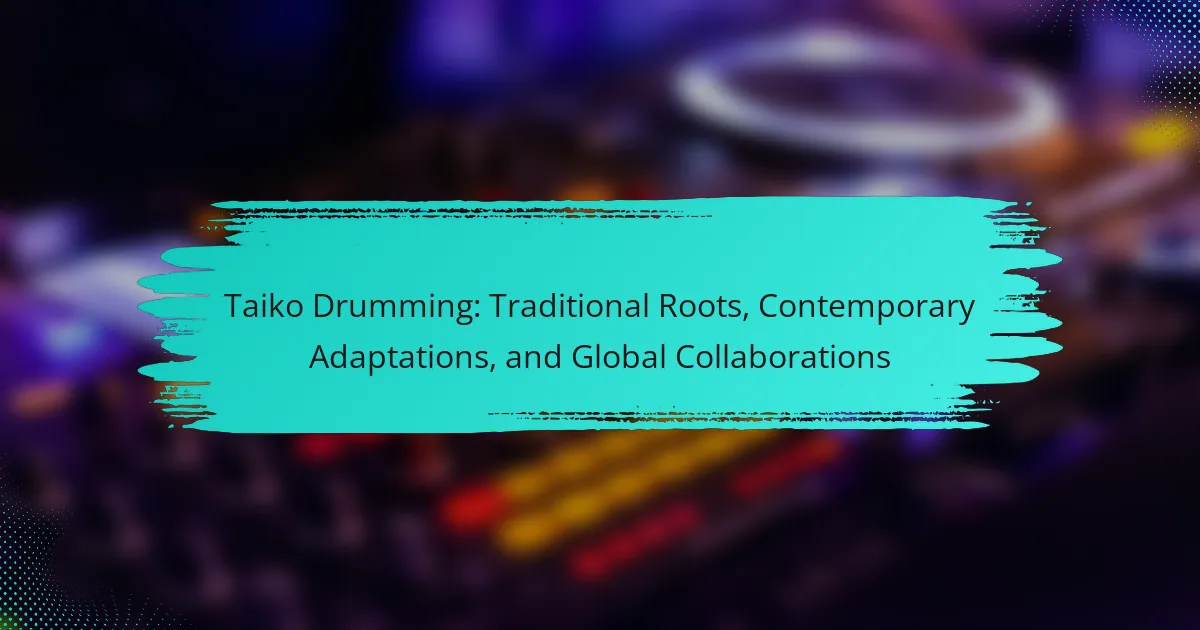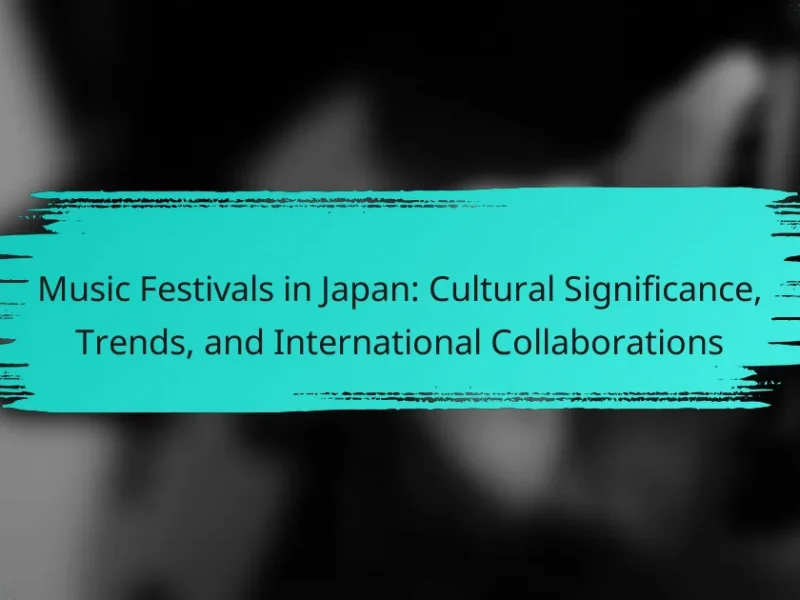Taiko drumming offers both physical and mental benefits while fostering community engagement. This article explores its traditional roots, contemporary adaptations, and global collaborations. It highlights the evolution of Taiko through diverse musical influences and educational programs. Additionally, we examine the challenges practitioners face in preserving authenticity amidst modern demands.
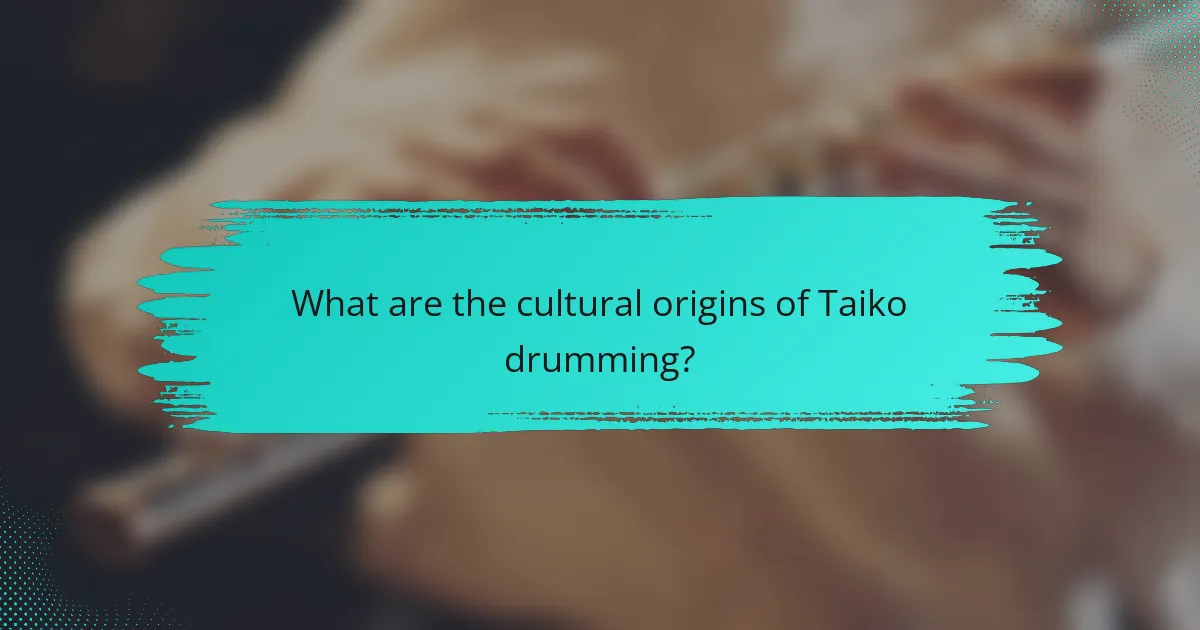
What are the cultural origins of Taiko drumming?
Taiko drumming originates from Japan, with roots in ancient agricultural rituals and military practices. It evolved as a form of communal expression, often accompanying festivals and religious ceremonies. Traditional Taiko ensembles, known as “kumi-daiko,” emerged in the 20th century, blending various styles and techniques. Today, Taiko drumming has adapted globally, influencing and collaborating with diverse musical genres, showcasing its cultural significance and versatility.
How does Taiko drumming reflect Japanese traditions?
Taiko drumming embodies Japanese traditions through its rhythmic patterns, communal spirit, and historical significance. This art form connects to Japan’s agricultural roots, often performed during festivals to celebrate harvests. The unique attribute of Taiko lies in its ability to blend traditional techniques with contemporary styles, fostering global collaborations. As a result, Taiko has evolved into a symbol of cultural identity, promoting unity and resilience within communities.
Which regional styles of Taiko exist across Japan?
Various regional styles of Taiko exist across Japan, each with unique characteristics. Notable styles include Kanto, which features a strong, steady beat, and Kansai, known for its dynamic rhythms. Other styles include the energetic Nagoya, the traditional Tsugaru, and the vibrant Yamagata. Each region’s Taiko reflects its cultural heritage and community spirit, showcasing diverse techniques and performance practices.
What instruments are traditionally used in Taiko ensembles?
Taiko ensembles traditionally use a variety of drums, primarily the Nagado-daiko, which is the standard barrel-shaped drum. Other instruments include the Shime-daiko, a smaller, high-pitched drum, and the Odaiko, a large drum producing deep sounds. These drums are often accompanied by wooden sticks called bachi, which vary in size and weight for different playing techniques. The ensemble may also incorporate other instruments like the flute and vocal chants, enhancing the performance’s rhythmic and melodic aspects.
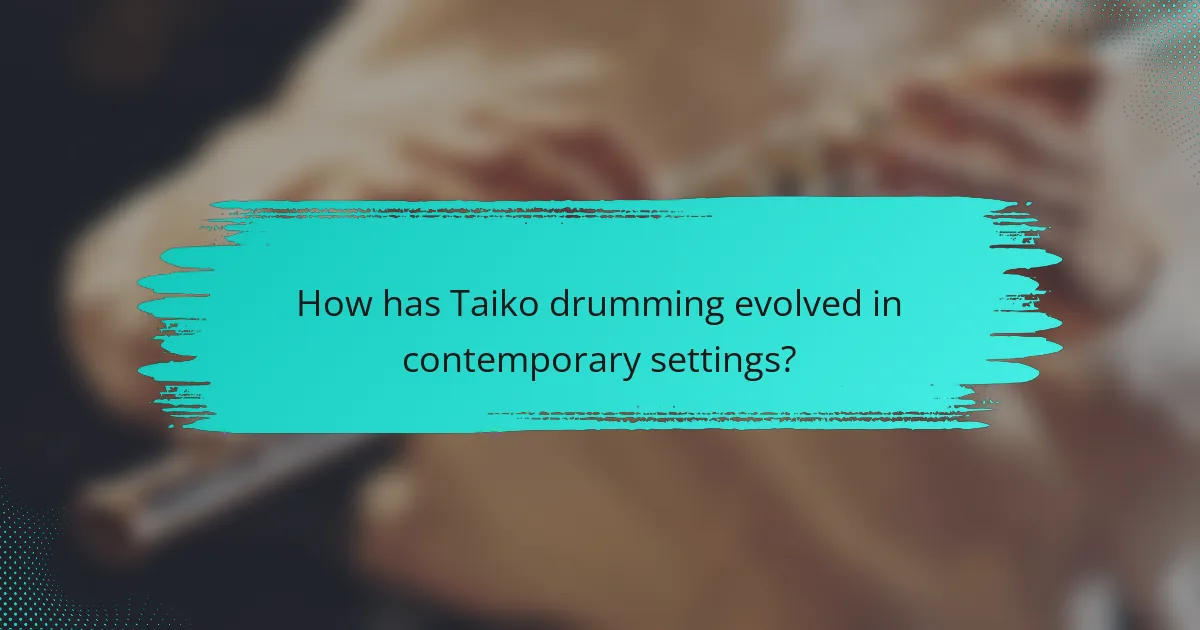
How has Taiko drumming evolved in contemporary settings?
Taiko drumming has evolved significantly, blending traditional techniques with modern influences. Contemporary settings showcase diverse styles, incorporating various musical genres and innovative performance practices.
Global collaborations have emerged, with taiko groups partnering with artists from different cultures, enriching the art form. This fusion expands taiko’s reach and appeal, attracting new audiences worldwide.
Additionally, educational programs have increased, promoting taiko as a means of cultural exchange and community engagement. Workshops and performances allow participants to experience this dynamic art form firsthand.
Overall, taiko drumming today reflects a vibrant interplay between tradition and modernity, showcasing its adaptability and enduring relevance.
What modern adaptations of Taiko are popular today?
Modern adaptations of Taiko drumming include fusion with various music genres, innovative choreography, and international collaborations. Popular forms involve Taiko ensembles that blend traditional rhythms with jazz, rock, and pop influences. Groups like Kodo and Yamato have gained global recognition, showcasing dynamic performances that incorporate theatrical elements. Additionally, community workshops and educational programs promote Taiko’s accessibility, fostering cultural exchange and appreciation worldwide.
How do contemporary Taiko groups incorporate fusion genres?
Contemporary Taiko groups integrate fusion genres by blending traditional rhythms with diverse musical styles. This approach enhances creativity and broadens audience appeal. Collaborations with genres like jazz, rock, and hip-hop showcase Taiko’s versatility. Unique attributes include the incorporation of modern instruments and innovative choreography, enriching performances. As a result, Taiko evolves while honoring its cultural roots, fostering global connections.
What role does Taiko play in modern performance art?
Taiko plays a significant role in modern performance art by blending traditional rhythms with contemporary styles. This fusion creates dynamic performances that engage audiences globally. Artists often collaborate across genres, incorporating elements from dance and theater, which enhances the emotional impact of the drumming. Taiko’s adaptability allows it to resonate with diverse cultures, making it a powerful medium for artistic expression.

Which global collaborations highlight Taiko drumming?
Global collaborations showcasing Taiko drumming include performances by groups like Kodo and Yamato, which blend traditional techniques with contemporary styles. These collaborations often feature international artists, enhancing cultural exchange. Notably, Kodo’s “One Earth Tour” emphasizes global unity through music. Taiko’s adaptability allows it to resonate across diverse audiences, creating unique cross-cultural experiences.
How do international artists integrate Taiko into their music?
International artists integrate Taiko into their music by blending traditional rhythms with diverse genres. Collaborations often feature Taiko’s powerful beats alongside jazz, rock, and electronic music, creating unique soundscapes. This fusion enhances global appreciation for Taiko, showcasing its versatility. Artists like Kodo and Yamato have pioneered these adaptations, influencing a new generation of musicians.
What festivals showcase Taiko drumming outside Japan?
Festivals showcasing Taiko drumming outside Japan include the Los Angeles Taiko Festival, San Francisco’s Cherry Blossom Festival, and the Toronto Japanese Festival. These events highlight traditional performances and contemporary adaptations, fostering cultural exchange and collaboration. Taiko drumming’s global appeal is evident in its integration into various cultural celebrations and music festivals worldwide.
Which cultural exchanges have influenced Taiko’s global presence?
Cultural exchanges such as collaborations with Western musicians and participation in international festivals have significantly influenced Taiko’s global presence. These interactions have led to innovative adaptations and the incorporation of diverse musical elements.
Taiko ensembles have engaged in cross-cultural projects, blending traditional techniques with contemporary genres. The rise of global interest in Japanese culture has also contributed to Taiko’s popularity outside Japan. As a result, Taiko drumming has evolved into a dynamic art form, reflecting a fusion of cultures while retaining its traditional roots.

What are the physical and mental benefits of practicing Taiko?
Practicing Taiko drumming offers significant physical and mental benefits. Physically, it enhances cardiovascular fitness, improves coordination, and builds muscle strength through dynamic movements. Mentally, it fosters focus, reduces stress, and promotes a sense of community among participants. As a result, Taiko drumming serves as a holistic activity that nurtures both body and mind.
How does Taiko drumming promote physical fitness?
Taiko drumming significantly enhances physical fitness through its dynamic movements and rhythmic intensity. Engaging in Taiko drumming requires full-body coordination, promoting cardiovascular health and muscle strength. The activity involves squatting, striking, and moving in rhythm, which increases endurance and flexibility. As a result, participants experience improved balance and core stability. Regular practice can lead to substantial calorie burn, making it an effective workout option.
What mental health benefits are associated with Taiko practice?
Taiko practice offers significant mental health benefits, including stress reduction, enhanced mood, and improved focus. Engaging in rhythmic drumming promotes mindfulness and emotional expression. Studies indicate that group drumming fosters social connections, reducing feelings of isolation. Furthermore, the physical activity involved releases endorphins, contributing to overall well-being.
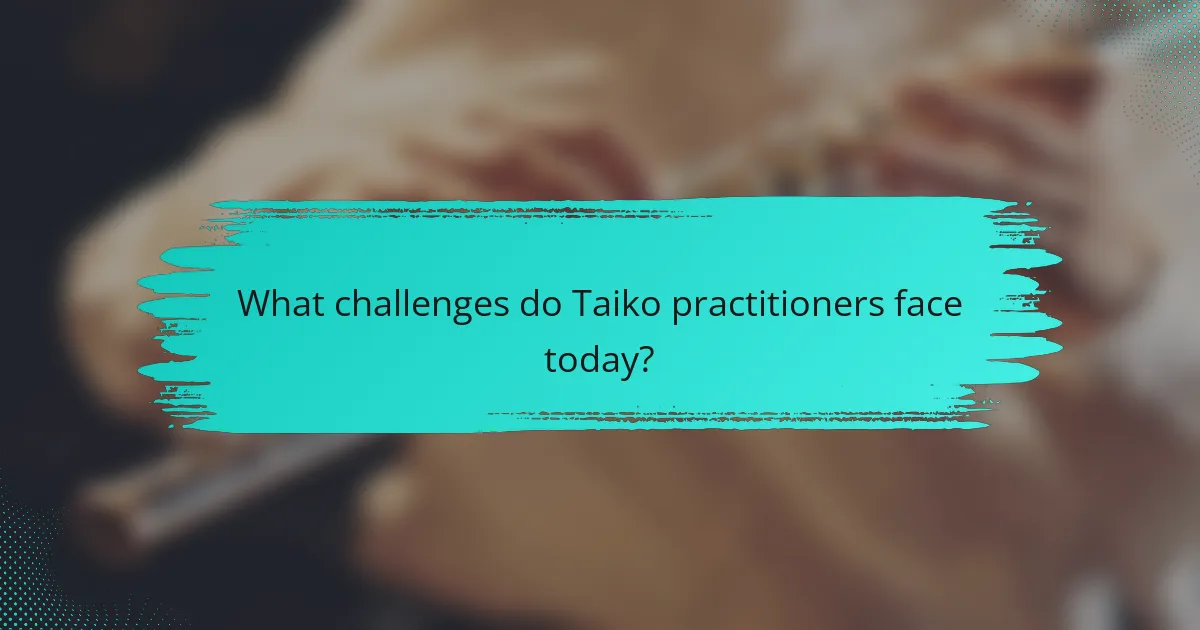
What challenges do Taiko practitioners face today?
Taiko practitioners face challenges such as cultural preservation, competition for resources, and adapting to modern audiences. Maintaining traditional techniques while innovating is crucial. Additionally, securing funding and venues for performances remains a significant hurdle. Global collaborations can enhance visibility but may dilute authentic practices.
How do cultural perceptions of Taiko influence its practice?
Cultural perceptions of Taiko significantly influence its practice by shaping performance styles and community engagement. In Japan, Taiko represents a communal spirit, often linked to festivals and rituals, fostering a sense of identity. Outside Japan, diverse interpretations emerge, blending traditional techniques with contemporary influences. This adaptability enhances global collaborations, allowing Taiko to resonate across cultures. Additionally, the unique attributes of Taiko, such as its physicality and rhythm, attract practitioners from varied backgrounds, enriching its practice and expanding its reach.
What are common misconceptions about Taiko drumming?
Many misconceptions exist about Taiko drumming, including its cultural significance and performance style. Some believe Taiko is solely a form of entertainment, overlooking its deep-rooted traditions and rituals. Others think it is exclusively Japanese, while contemporary adaptations have emerged globally. Additionally, some assume Taiko drumming requires extensive training, when in fact, many groups welcome beginners. Misunderstandings also arise around the instruments; not all Taiko drums are large, as various sizes and types exist. These misconceptions can limit appreciation for the art form’s diversity and richness.
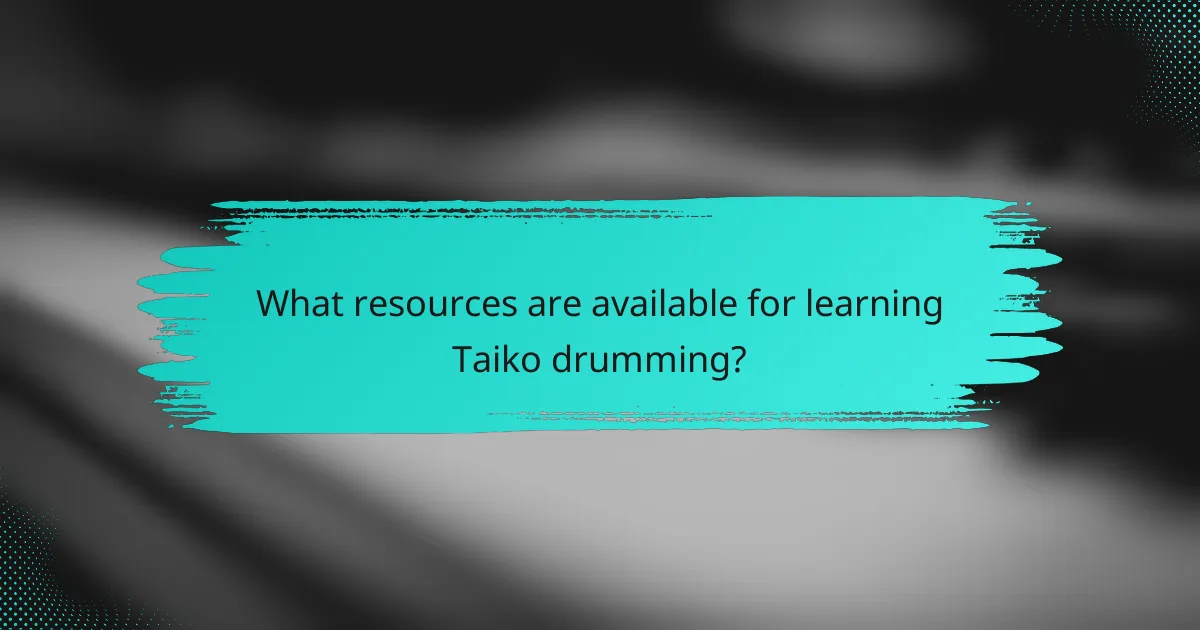
What resources are available for learning Taiko drumming?
Various resources are available for learning Taiko drumming, including online courses, instructional books, and community workshops. Online platforms like YouTube offer free tutorials, while websites such as Taiko Community offer structured classes. Books like “Taiko: The Art of Japanese Drumming” provide in-depth knowledge. Local community centers often host workshops for hands-on experience. Additionally, attending Taiko performances can enhance understanding and appreciation of the art form.
Which online platforms offer Taiko drumming tutorials?
Several online platforms offer Taiko drumming tutorials, including YouTube, Udemy, and Skillshare. YouTube provides a wide range of free instructional videos from various instructors. Udemy features structured courses with a focus on technique and rhythm. Skillshare offers classes that emphasize creativity and collaboration in Taiko drumming. Each platform caters to different learning styles and levels, making them accessible to beginners and advanced drummers alike.
What are the best practices for joining a Taiko group?
Joining a Taiko group involves understanding the culture, attending workshops, and practicing regularly. First, research local Taiko groups to find one that aligns with your interests. Attend introductory classes to learn basic techniques and rhythms. Engage with group members to foster connections and understand group dynamics. Regular practice is essential for skill development and cohesion within the group. Lastly, participate in performances to gain experience and deepen your commitment to the art.
What mistakes should beginners avoid in Taiko drumming?
Beginners in Taiko drumming should avoid rushing through techniques, neglecting proper posture, and skipping warm-ups. These mistakes can hinder progress and lead to injury. Additionally, not listening to experienced drummers can limit growth. Practicing consistently and focusing on rhythm is crucial for improvement.
